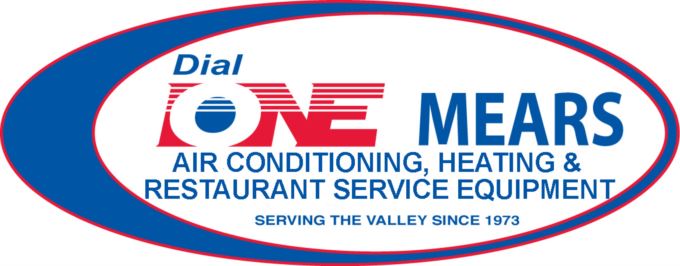
Ceiling fans are one of the most underrated ways to increase home comfort and cut energy costs. By improving air circulation and working in conjunction with your HVAC system, ceiling fans and energy efficiency are truly a perfect combination. They offer a practical, energy-efficient way to stay cool while easing strain on your AC—even preventing unnecessary air conditioning repair.
In this blog, the experts at Dial One Mears Air Conditioning & Heating Inc discuss how ceiling fans can improve your comfort while avoiding energy waste with increased HVAC efficiency. We'll also provide some HVAC efficiency tips that make the most of ceiling fans.
Comfort vs. Temperature: Staying Cool Using the Wind-Chill Effect Indoors
Ceiling fans don’t actually lower the room temperature—they make you feel cooler by increasing air movement across your skin. This is called the wind-chill effect, and it can make a room feel up to 4 degrees cooler without lowering the thermostat. That means you remain cool and enjoy the benefits of indoor air circulation from your ceiling fan while using less AC—helping reduce your electric bill in summer.
The Best of Both: Benefits of Using Fans and Air Conditioning Together
There are several benefits to using ceiling fans and air conditioning in tandem, especially on hotter days. By pairing both, you maximize HVAC efficiency and maintain a comfortable indoor temperature with less strain from your cooling system.
Why you should use ceiling fans and AC together:
- Ceiling fans help lower HVAC load by moving cool air more evenly around rooms in your home. Decreasing HVAC stress is important, because it can save you from a breakdown that may result in premature AC or furnace installation.
- Using ceiling fans improves your indoor comfort by getting rid of warm pockets and improving air movement.
- Pairing ceiling fans and AC can cut energy consumption. If you have a home automation system, you can even modify your smart thermostat settings to bump up the temp a few degrees while your ceiling fan is running.
Clockwise vs. Counterclockwise Ceiling Fan Rotation: Which is the Correct Direction?
To make full use of your ceiling fans year-round, it’s important to set the blades to rotate in the proper direction for the season. The direction affects how air flows, which can either cool you down or redistribute heat so you feel warmer.
When to spin ceiling fans counterclockwise
On hot days, ceiling fans should rotate counterclockwise at a faster setting. This creates a breeze that forces cool air down, amplifying the wind-chill effect and making you feel cooler.
When to rotate ceiling fans clockwise
In the winter, set your fan to turn clockwise on a gentle setting. This gently pulls cool air upward and pushes warm air near the ceiling down toward you, so you feel warmer without touching your thermostat.
How to Pick Out the Best Ceiling Fan for My Home
Choosing the best ceiling fan depends on a few critical considerations, such as blade design, airflow rating and room dimensions. First, look for fans that offer a good combination of ECFM airflow and blade pitch to deliver efficient air movement in your space:
- ECFM refers to how much air a fan circulates—the cubic feet per minute, or CFM—per watt of electricity it uses. Fans with higher ECFM are the most energy efficient.
- Blade pitch refers to the tilt of the blades. A sharper blade pitch moves more air but can also stress the fan’s motor.
Also, consider room size when sizing a ceiling fan—a fan that’s too small won’t circulate sufficient air, while one that’s too large may be disruptive in a smaller room.
Boost Your HVAC Efficiency With the Team from Dial One Mears Air Conditioning & Heating Inc
At Dial One Mears Air Conditioning & Heating Inc, our HVAC technicians can help you enjoy year-round comfort while easing the burden on your heating and cooling systems. From efficient ceiling fan strategies and air conditioning installation to smart thermostats and furnace repair, we offer comprehensive solutions that fit your lifestyle. Reserve your appointment by calling 602-584-2884 today.
